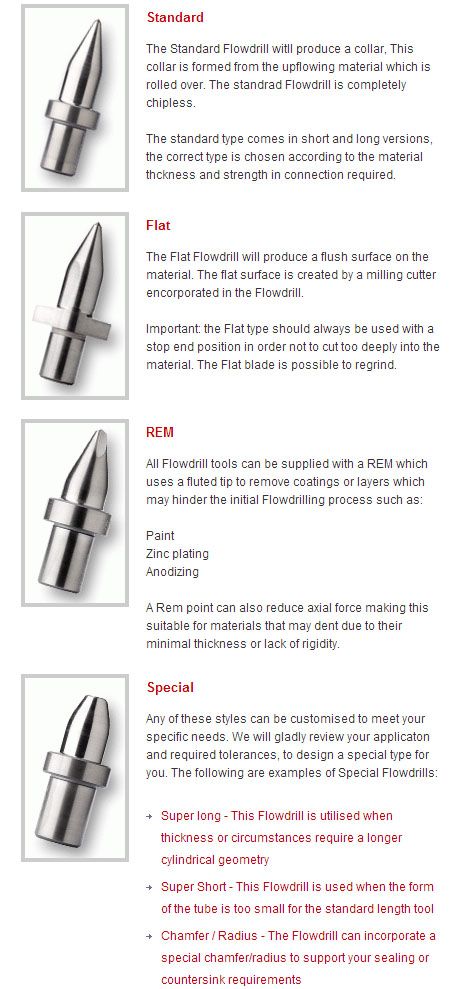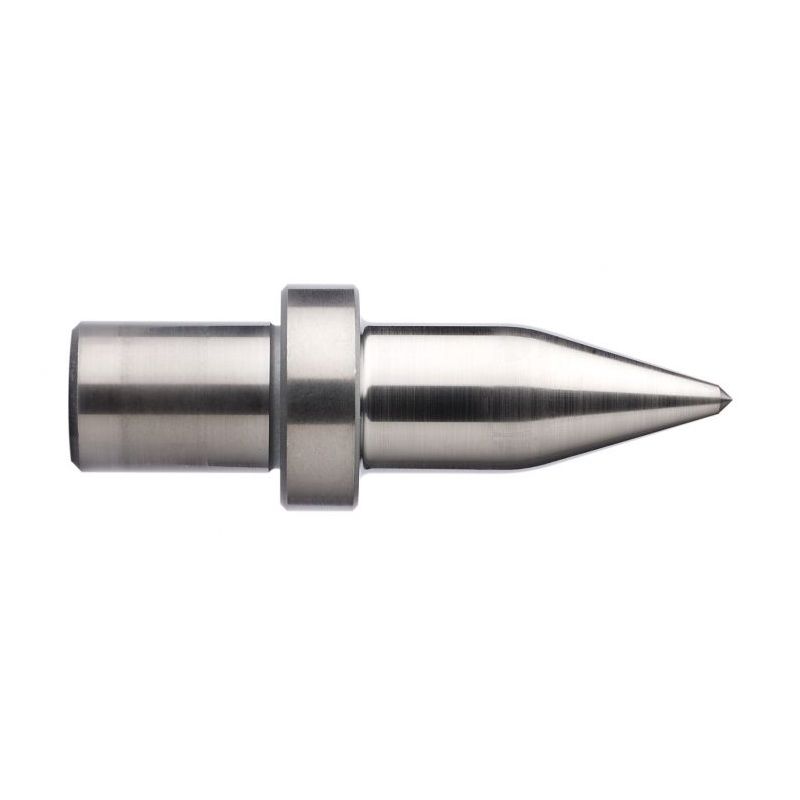Flowdrill za bušenje rupa u cijevima
Flowdrill za bušenje rupa u cijevima

Step 1
The Flowdrill comes into contact with the material using relatively high axial pressure and rotational speed. The generated heat makes the material soft and malleable enough to be formed and perforated.
As the Flowdrill pushes into the material, some of the displaced material forms a collar around the upper surface of the workpiece. The rest of the material forms a bushing in the lower surface of the workpiece.
All this happens in a matter of seconds. The resulting collar and bushing can be up to 3 times the original material thickness. The diameter of the bush is accurately determined by the cylindrical part of the Flowdrill tool.
Step 2
The Flowtap creates formed threads by material displacement. The material flows into the thread depression and crest of the tap.
About The Flowdrill Process:
Flowdrill is:
- Capable of strong treaded connections
- Capable of drilling steel, stainless steel, copper, aluminum and brass
- Capable of drilling 1.0 to 10.0 mm material thickness
- Capable of drilling 10,000 holes in mild steel and 5,000 holes in stainless steel
- Environmentally friendly, no waste, no single fasteners, and recyclable
About The Flowtap Process:
Flowtaps produce the same gauge as standard cutting taps however the Flowtap forms the thread rather than cutting the thread. The advantages of this are:
- Chipless process - due to forming not cutting
- Stronger threads - the material grain is retained (see image below)
- Long tool life time - equivalent to 4000 - 8000 cycles
| OFFICE Samobor | Unavailabe |
| OFFICE Otok Samoborski | Unavailabe |
| OFFICE Sveta Nedelja Obrtnička | Unavailabe |
| OFFICE Sveta Nedelja - Franje Tuđmana | Unavailabe |
| OFFICE Prelog | Unavailabe |
Metal-Kovis d.o.o. does not guarantee that the prices, availability and descriptions of the product are accurate, as well as that the photos match their true appearance.


